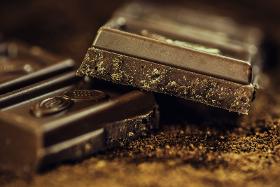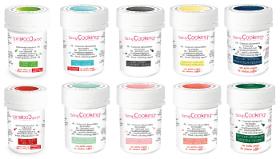- europages
- >
- COMPANIES - SUPPLIERS - SERVICE PROVIDERS
- >
- additives- dyes and pigments - industrial
Results for
Additives- dyes and pigments - industrial - Import export
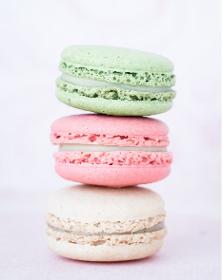
SEVAROME
France
Yellow: carthame extract, riboflavin Yellow/Orange: carotene, annatto (rocou), paprika, lutein (tagete) Brown: Colouring caramel Red: carmine, beetroot, anthocyanin Green: with blue and yellow Violet: with red and blue Blue Black: vegetable black coal
Request for a quote
SEVAROME
France
Yellow: Lemon yellow, Pineapple yellow, Yolk yellow, Golden yellow Orange: Golden orange, Tangerine orange Brown: Coffee brown, Chocolate brown, Caramel brown, Hazelnut brown Red: Strawberry red, Raspberry red, Cherry red, Bilberry red Green: Mint green, Pistachio green, Olive green Purple Blue: Light blue, Turquoise blue Black: Shiny black, Inky black
Request for a quote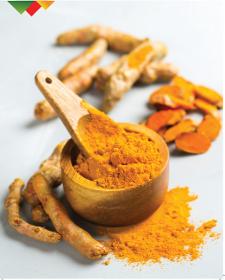
ROHA EUROPE SL
Spain
Turmeric E100 Turmeric is a flowering plant of the ginger family, Zingiberaceae, the roots of which are used in cooking. The plant is rhizomatous, herbaceous, perennial, and is native to the Indian subcontinent and Southeast Asia. It requires temperatures between 20 and 30 °C (68 and 86 °F) and a considerable amount of annual rainfall to thrive. Curcumin pigment is obtained by solvent extraction of dried rhizomes of Curcuma Longa L. (Turmeric) of Indian origin. Curcumin is crystallised dried and powdered to achieve purity. Turmeric can be produced in a variety of forms including water soluble and dispersible powders or liquids and can be highly concentrated when required Applications: Hard Boiled Candy, Marshmellow, Pickles, Gravies, Sauces and soups, Ice Creams and Yoghurts, Fruit Preparations, Bakes Goods, Extruded Products, Spice and Dry Blend
Request for a quote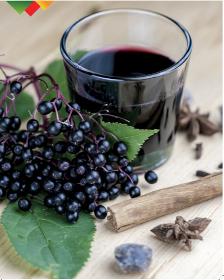
ROHA EUROPE SL
Spain
Elderberry Elderberry, also known as Sambucus has been sought after for centuries for use in medicine and as a food colorant. Grown in temperate to sub-tropical regions globally, Elderberry juice is a dark red liquid with a characteristic odor. Due to the variety of anthocyanins present, shade ranges from Pink to Red can be achieved depending on the application Applications: Beverages, Fruit confectionery, Sorbets and Fruit sauce
Request for a quote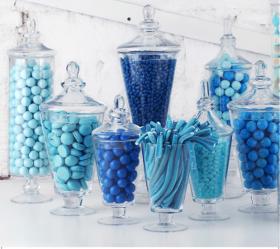
ROHA EUROPE SL
Spain
Spirulina Spirulina Extract is made from biomass of the Cyanobacteria Arthrospira Platensis. The blue green alga Spirulina is arguable nature’s most powerful green food. With over 60% protein content, Spirulina is the highest, most digestible source of “complete” protein. Spirulina is usually grown in open ponds across china, India and the US and requires a sunshine year round. Spirulina can be offered in both powder and liquid forms and qualifies as a clean label blue natural colour. Although sensitive to low pH and high temperatures, Spirulina finds use across the confectionary and dairy applications Applications: Confections, Dessert Coatings and Frostings, Ice Creams, Yoghurts
Request for a quote
ROHA EUROPE SL
Spain
Paprika E160c Paprika is a popular spice and an important ingredient in many recipes, especially across the Indian sub-continent. Major pigments extracted are the oil soluble Carotenoids, Capsanthin and Capsorubin. Points to note: All Paprika products supplied by Roha are sold with a guarantee of HPLC testing for illegal dyes (Sudan I, II, III & IV etc), whereby only those products with a complete absence of non-permitted dyes are supplied. Roha offers special quality of Paprika with high stability to light&- Applications: Spice blends, Confectionery, Cheese, Processed Meat, Snack Foods, Cereal, Baked goods, dressing
Request for a quote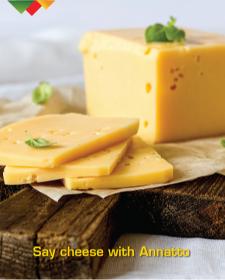
ROHA EUROPE SL
Spain
Main pigments are the water soluble Norbixin and the oil soluble Bixin. Points to note: Annatto precipitates at acidic pH but acid-proof versions are available in the Roha range. Annatto can be blended with E100 Turmeric to impart a more wholesome yellow hue. Applications: Fats & Oils, Margarines, Fat Based Coatings and cream fillings, Cheese, Snack Products, Ice Cream and Ice Cream cones, Sausage Casings, Fruit Preparations, Confectionery, Bake Mixes, Dry blends
Request for a quote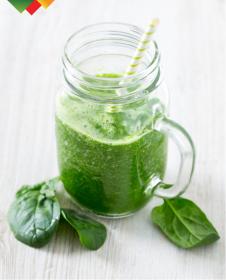
ROHA EUROPE SL
Spain
Chlorophyll Chlorophyll is the green pigment found in leaves, grass, vegetables and all organisms capable of photosynthesis. The principal pigment is E140 Chlorophyll, however this is relatively unstable with weak colouring intensity. Often, the product is treated with copper salts to render E141 Cu Chlorophyll which has a more vibrant shade and greater stability Applications: Dairy, Confectionary, Beverage, Prepared Foods, Meat
Request for a quote
ROHA EUROPE SL
Spain
Carthamus Straight from the Mediterranean, Europe, and USA, this colorant, extracted from carthamus tinctorius, also known as safflower, is completely natural and continues our clean label commitment. Carthamus Extract provides shades of yellow to orangish yellow when used alone, or can provide a variety of red shades when blended with Paprika or Anthocyanins and Green when combined with Spirulina. Such is the versatility of Carthamus Applications: Carthamus is the perfect choice for your confectionery, beverage, bakery, dairy, or meat application
Request for a quote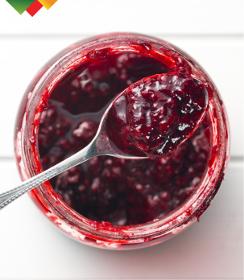
ROHA EUROPE SL
Spain
Carmine Carmine, also called cochineal is a bright red pigment obtained from the aluminium salt of carminic acid. The pigment is extracted from the female cochineal beetle, (Dactylopius coccus costa), inhabiting only on the prickly pear cactus (Opuntia ficus indica). Grown in Peru, Ecuador and Canary Islands. It is the most stable and vibrant natural colour and is applied across many food applications to give bright pink shades Applications: Soft Drinks, Alcoholic Drinks, Confectionery, Seasonings, Baked Goods, Meat Applications, Desserts, Soups and Sauces, Fat Coatings, Jams and Jellies, Dairy Product
Request for a quote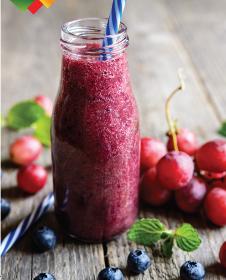
ROHA EUROPE SL
Spain
Anthocyanin Anthocyanins are extracted from many fruits and vegetables and can provide a wide range of shades or colours in different applications. These water soluble pigments can be free form or acylated which can improve pigment stability and modify the shade. Careful blending of different anythocyanins can provide unique and interesting colours. Anthocyanin is extracted from fruits and vegetables, like Grape Skin, Elderberry, Red Cabbage, Red Radish, Purple Corn, Purple Sweet Potato, Purple Carrot Applications: Beverages, Preserves, Jams and Jellies, Confectionery, Prepared Food, Bakery
Request for a quote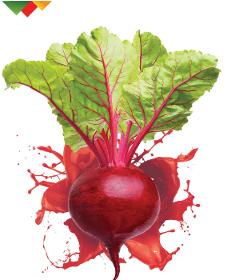
ROHA EUROPE SL
Spain
Red Beet Red beet concentrate is extracted from selected fresh red beetroots. It is concentrated and pasteurized by physical means to obtain an intense standardized color. Betanin is the colouring component and although not usually stable to high temperatures, Roha offers a unique heat stable redbeet option which can be used as a carmine replacer across multiple application Applications: Yoghurts, Confectionery, Ice Cream and Frozen Desserts, Fruit Preparations, Strawberry Milk, Meat, Prepared FoodD BE
Request for a quote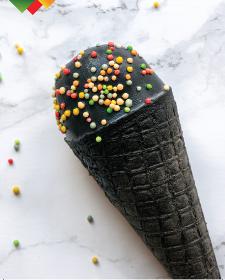
ROHA EUROPE SL
Spain
Carbon Black E153 As the name suggests, CarboVegetabilis (or Carbon Black) is made from fine particles of carbonized vegetable material. The finer the particles, the higher the power of coloring. Its most common application form is a water dispersible suspension (paste). Possible shades range from grey to black, depending while offering excellent pH, light and heat stability. Points to note: Although most commonly in powder form, Roha also offers a paste variant should dusty powders wish to be avoided Applications: Hard Boiled Candy, Jellies, Ice Cream, Cookies, Breads
Request for a quote
STOOPEN & MEEÛS
Belgium
Stoopen & Meeûs has two types of Stuc in the range: Stuc Granito & Stuc Deco. Both are highly decorative & mineral products for floors and walls. "Lime look with the strength of concrete" "Tadelakt look in two layers and less than half the price!" Stuc can be applied on any solid, dry surface such as concrete, screed, but also on existing tiles. Walls, tables and countertops, etc. ... can also be finished with Stuc. The fact that you can apply Stuc directly on tiles, makes that much time, material and cost can be saved! Granito & Deco Stuc is applied in layers of less than 1 mm. Smooth surfaces can already complete in 2 layers (total thickness of + - 1.5 mm). To finish existing tiles 3 to 4 very thin layers will suffice. (Total thickness 1,5-2 mm) Using Stuc Granito and Deco: All Stuc layers are placed with a stainless spatula. 1. degreasing of Surface and application of StucPrimer by means of a roller or brush. 2.
Request for a quote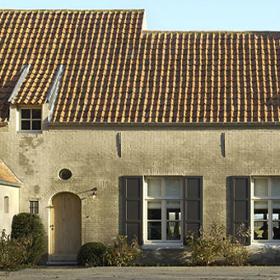
STOOPEN & MEEÛS
Belgium
Badgeoning is an age-old technique for an authentic façade finish, where mineral paint is applied sufficiently thickly with a blocked brush. The Stoopen & Meeûs Primium Quality Badgeon is weather-resistant and shows the structure of the brickwork and when the weather is wet, it shows the surface forming which it is famous for. The brushing technique helps determine the look and the absorbency of the substrate determines the colour nuance in the badgeon coat. The thickness of the application, 1-3 mm, is determined by the amount of mixing water that is used, the brush and the number of coats. It is recommended you apply two coats at a time, where the first coat is applied diluted to counterbalance the strong absorption of the substrate (the diluted coat is always a little lighter in colour). If both coats are coloured, no white undercoat will be revealed in case of damage. The Primium Quality Badgeon+ is a compound of mineral raw materials (maximum grain size 0.
Request for a quoteDo you sell or make similar products?
Sign up to europages and have your products listed
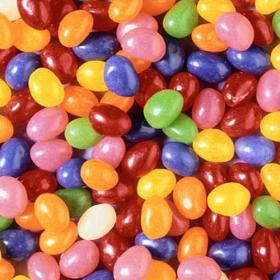
STOOPEN & MEEÛS
Belgium
candy, spices, herbs, ... FOODCOLOURS A dye is a substance that needs a certain affinity with the carrier on which it is being applied. Hence a bond is created and the colouring capacity emerges. Contrary to a pigment, a dye is a dissolvable colorant and the colouring capacity will only show when dissolved. Dyes always have an organic compound. For more than 5000 years, natural resources have been the base for dyes. Leafs, roots and berries are just some of the components. Nowadays, most of these components have been replaced by synthetic variants. Of course, special dyes are applied when considering nutrition. (E100-199) Some dyes can be transformed in pigments by applying iron salt in a solution. This will cause the formation of the pigment. However, pigments won in this way are often little UV-resistant. What are dyes? There exists a great number of dyes for a great number of applications. Dyes are usually categorised based on their properties. (e.g.
Request for a quote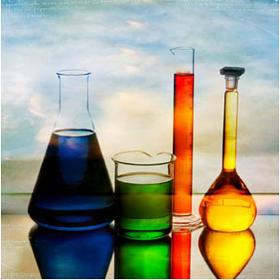
STOOPEN & MEEÛS
Belgium
detergents, ... WATER-SOLUBLE DYES A dye is a substance that needs a certain affinity with the carrier on which it is being applied. Hence a bond is created and the colouring capacity emerges. Contrary to a pigment, a dye is a dissolvable colorant and the colouring capacity will only show when dissolved. Dyes always have an organic compound. For more than 5000 years, natural resources have been the base for dyes. Leafs, roots and berries are just some of the components. Nowadays, most of these components have been replaced by synthetic variants. Of course, special dyes are applied when considering nutrition. (E100-199) Some dyes can be transformed in pigments by applying iron salt in a solution. This will cause the formation of the pigment. However, pigments won in this way are often little UV-resistant. What are dyes? There exists a great number of dyes for a great number of applications. Dyes are usually categorised based on their properties. (e.g.
Request for a quote
STOOPEN & MEEÛS
Belgium
petroleumbased products, candles, ... SOLVENT DYES A dye is a substance that needs a certain affinity with the carrier on which it is being applied. Hence a bond is created and the colouring capacity emerges. Contrary to a pigment, a dye is a dissolvable colorant and the colouring capacity will only show when dissolved. Dyes always have an organic compound. For more than 5000 years, natural resources have been the base for dyes. Leafs, roots and berries are just some of the components. Nowadays, most of these components have been replaced by synthetic variants. Of course, special dyes are applied when considering nutrition. (E100-199) Some dyes can be transformed in pigments by applying iron salt in a solution. This will cause the formation of the pigment. However, pigments won in this way are often little UV-resistant. What are dyes? There exists a great number of dyes for a great number of applications. Dyes are usually categorised based on their properties. (e.g.
Request for a quote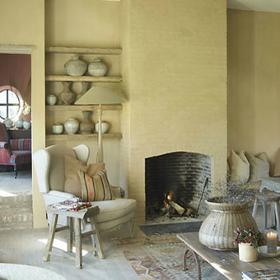
STOOPEN & MEEÛS
Belgium
Stoopen & Meeûs’ Primium Quality Limepaint is a mat chalk decorative paint for both in- and outdoors. There are many possibilities for indoor decorative painting- and spatula-techniques for the Limepaint, which is also very suitable for restorations. This paint has a mat chalk - and mineral look and is extremely suitable for all manner of decorative painting techniques and renovations of old buildings. The Limepaint is sold in powder form, together with a wide range of pigments. The pigment is added to the mixing water and mixed with the powder-paint afterwards. If a little less water is added, various spatula-techniques are possible.
Request for a quote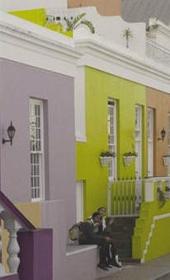
STOOPEN & MEEÛS
Belgium
Oil paint, watercontaining paint, mineral paint, synthetic paint, ... ZINC WHITE NATURAL OXIDES: yellow, red, brown, black SYNTHETIC IJZEROXIDES: yellow, red, brown, black DRAGON PIGMENTS: red, yellow, blue, green, grey CHROME LEAD/ LEAD CHROMATE: yellow, orange MOLYBDATE ORANGE CADMIUM SULPHIDE: yellow, orange, red CHROME OXIDE GREEN CHROMATE GREEN COBALTOXIDE: green, blue ULTRAMARINE: blue, violet MILORI OR PRUSSIAN BLUE CARBON- or PITCH-BLACK IVORY OR BONE BLACK CHROMATE GREEN YELLOW: PY 1, PY 3, ... RED: PR 2, PR 3, ... GREEN: PG 7, PG 8, ... BLUE: PB 15, TITANIUM DIOXIDE WHITE A pigment is a substance that has the capacity of colouring a certain carrier (cement, plaster, synthetic fibres, paint, …). Contrary to dyes, pigments are insoluble. Therefore, pigments remain under the form of small particles and will just be dispersed in the carrier and so colouring the carrier.
Request for a quote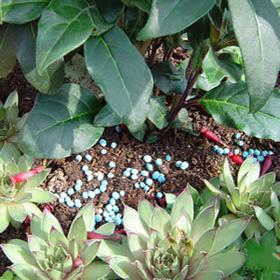
STOOPEN & MEEÛS
Belgium
Liquid and powdered fertilizers, sowing seed NATURAL OXIDES: yellow, red, brown, black BISTER SYNTHETIC IRON OXIDES: yellow, red, brown, black DRAGON PIGMENTS: red, yellow, blue, green, grey A pigment is a substance that has the capacity of colouring a certain carrier (cement, plaster, synthetic fibres, paint, …). Contrary to dyes, pigments are insoluble. Therefore, pigments remain under the form of small particles and will just be dispersed in the carrier and so colouring the carrier. The colouring capacity of the pigment depends on the fineness of the particles composing the pigment. In general we can say that the finer the particles are, the higher the colouring capacity of the pigment will be. A pigment is only suitable for certain applications. The pigment shouldn’t react with the carrier. Moreover, the pigment shouldn’t oxidize under influence of oxygen in the air and shouldn’t lose its colour under influence of sunlight (UV).
Request for a quote
STOOPEN & MEEÛS
Belgium
Plastic, epoxy, polyester, alkyd, quartz floors, roofing, ... NATURAL OXIDES: yellow, red, brown, black SYNTHETIC IJZEROXIDES: yellow, red, brown, black DRAGON PIGMENTS: red, yellow, blue, green, grey CHROME OXIDE GREEN COBALT OXIDE: green, blue CARBON- or PITCH-BLACK MILORI OR PRUSSIAN BLUE CHROME GREEN YELLOW: PY 1, PY 3, ... RED: PR 2, PR 3, ... GREEN: PG 7, PG 8, ... BLUE: PB 15, ... ULTRAMARINE: blue, violet TITANIUM DIOXIDE WHITE A pigment is a substance that has the capacity of colouring a certain carrier (cement, plaster, synthetic fibres, paint, …). Contrary to dyes, pigments are insoluble. Therefore, pigments remain under the form of small particles and will just be dispersed in the carrier and so colouring the carrier. The colouring capacity of the pigment depends on the fineness of the particles composing the pigment. In general we can say that the finer the particles are, the higher the colouring capacity of the pigment will be.
Request for a quote
STOOPEN & MEEÛS
Belgium
Industry floors, concrete block-systems, plant pots, bicycle paths, clinkers, tiles, flags, joint wet mortar, cement adhesive, mineral paints,… NATURAL OXIDES: yellow, red, brown, black SYNTHETIC IRON OXIDES: yellow, red, brown, black DRAGON PIGMENTS: blue, green, grey CHROME OXIDE GREEN COBALTOXIDE BLUE CARBON- or PITCH-BLACK (limited) TITANIUM DIOXIDE WHITE A pigment is a substance that has the capacity of colouring a certain carrier (cement, plaster, synthetic fibres, paint, …). Contrary to dyes, pigments are insoluble. Therefore, pigments remain under the form of small particles and will just be dispersed in the carrier and so colouring the carrier. The colouring capacity of the pigment depends on the fineness of the particles composing the pigment. In general we can say that the finer the particles are, the higher the colouring capacity of the pigment will be. A pigment is only suitable for certain applications. The pigment shouldn’t react with the carrier.
Request for a quote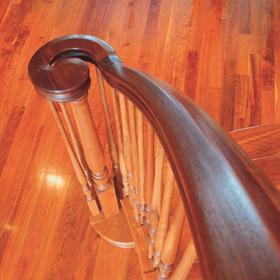
STOOPEN & MEEÛS
Belgium
staining, polishing, varnishing,... NATURAL OXIDES: yellow, red, brown, black STAIN, COLOURED STAIN SYNTHETIC IRON OXIDES: yellow, red, brown, black CHROME OXIDE GREEN COBALT OXIDE: green, blue ULTRAMARINE: blue, violet CARBON- or PITCH-BLACK TITANIUMDIOXIDE WHITE LEAD CHROMATE : yellow, orange WATER-SOLUBLE DYES: acid and basic A dye is a substance that needs a certain affinity with the carrier on which it is being applied. Hence a bond is created and the colouring capacity emerges. Contrary to a pigment, a dye is a dissolvable colorant and the colouring capacity will only show when dissolved. Dyes always have an organic compound. For more than 5000 years, natural resources have been the base for dyes. Leafs, roots and berries are just some of the components. Nowadays, most of these components have been replaced by synthetic variants. Of course, special dyes are applied when considering nutrition.
Request for a quote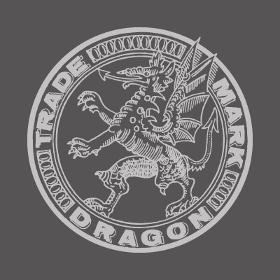
STOOPEN & MEEÛS
Belgium
Stoopen & Meeûs offers you our expertise in mixing pigments at your personal demand. And this already from 1000 kg. In order to enable us to find the most fitting solution for your demand, we have a range of more then 400 pigments in stock and different suppliers worldwide. For all custom-made solutions, and in order to find a solution with the highest quality, we maintain a close deliberation with our clients, which aims to obtain the required colour for your application . Even for non-coloured products, it is possible to find a solution. Furthermore, we offer you our pigments in adapted packaging, like small packages, low melt, watersoluble packaging…. Stoopen & Meeûs is already active in different sectors or domains, with adapted formulas : Concrete and chalk products Paints, polishing/furniture wax/varnish Plastics Fertilizers and protection of plants Asphalt Bricks Chemicals Resin …
Request for a quote
STOOPEN & MEEÛS
Belgium
In consultation with some external advisors, Stoopen & Meeûs have put together a colour palette for the Badgeon and Lime wash. These people, all of whom have worked in the world of paint for years, are trendsetters in their field and this has resulted in an extensive colour range To make these pigments mainly inorganic pigments have been used. For organic-based pigments too, only the highest quality pigments have been used which will keep their beautiful colours over many years. For safety reasons some colours are ‘exclusively suited for indoor use’ in Badgeon or Lime wash. It concerns the Whitewash pigments: red: Lucca, Minos blue: Lagoon, Magma These pigments come in 400 gram jars. For Badgeon, 1 jar per 25 kilo bag or 16 kilo bucket will usually suffice. For Lime wash, it may be necessary to add 1, 2, or 3 jars per 8 kilo bucket of Lime wash to acquire a deep, intense colour. All pigments can be intermixed into a wide range of mixed colours.
Request for a quote
STOOPEN & MEEÛS
Belgium
Deco is a high quality Stuc, decorative & mineral, used on floors, walls and countertops (kitchen, bathroom). Deco stucco easily allows to create shades like a tadelakt. Appearance may vary from a rough, nuanced look to a smooth, glossy tadelakt look. "Tadelakt view in two layers and less than half the price!" Deco stucco can be applied to almost any solid surface in good condition, such as occupation, screed, concrete, tile, stucco ... Deco is particularly suitable for renovation of old bathrooms and tile floors. Deco should be finished with varnish or a soap on all floors, countertops and wet areas. Finish off with soap is sufficient for "normal" floors in living rooms, bedrooms ... Applying a varnish provides better protection against stains and moisture. Difference with Granito: -Deco has a slightly coarser grain and is therefore slightly thicker (1-2mm) -Deco has more and more nuances after polishing. -Deco feels soft after polishing.
Request for a quoteResults for
Additives- dyes and pigments - industrial - Import exportNumber of results
39 ProductsCountries
Company type
